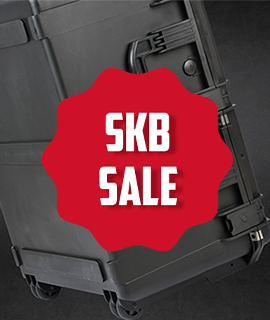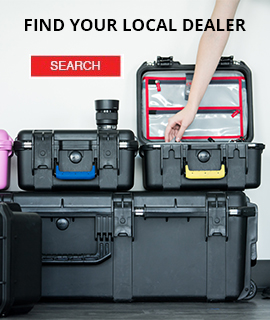SKB was recently awarded a large US Military contract for transit cases designed to house a life saving piece of personal safety equipment designed for NBC (Nuclear, Biological, & Chemical) warfare threats. Due to the extreme operating environment, and vital importance of the mission, the specifications required that our customer complete a full battery of Military Standard testing on our 3I series case.
All testing was done at an ISO/IEC 17025 and ISO 9001 certified third party test laboratory. The case being tested was our 3I-2011-7B, but the entire series would be qualified by reasons of similarity. The following are the Military Standard tests that we performed, and passed successfully:
Storage Temperature High +71°C (+160°F) MIL-STD-810E Method 501.3, procedure I,storage
Storage Temperature Low -56°C (-69°F) MIL-STD-810E Method 502.3, procedure I, storage
Storage Temperature Shock 16°C per minute, -39°C to +23°C, +23°C to -39°C, +23°C to +52°C,+52°C to +23°C MIL-STD-810E Method 503.3
Storage Humidity Cycling 5 to 100% RH, MIL-STD-810E, Method 507.3, procedure II, induced
Fungus 28 days, MIL-STD-810E, Method 508.4, procedure I
Altitude 40,000 feet above sea level, MIL-STD-810E, Method 500.3, procedure I
Transport Vibration, Basic Transportation, MIL-STD-810E, Method 514.4, category 1, procedure I
Transport Vibration, Loose Cargo Transport, MIL-STD-810E, Method 514.4, category 3, procedure III
Transport Shock, Transit Drop (26 drops), MIL-STD-810E, Method 516.4, procedure IV
Salt Fog, MIL-STD-810E, Method 509.3, procedure I, Aggravated Screening Solar Radiation, MIL-STD-810E, Method 505.3, procedure II
Rain, MIL-STD-810E, Method 506.3, procedure I, Blowing Rain (4/hr @ 40 mph)
Sand and Dust, MIL-STD-810E, Method 510.3, procedure I, Blowing Dust (@ +23°C & +52°C)
Sand and Dust, MIL-STD-810E, Method 510.3, procedure II, Blowing Sand (@ +52°C)
Immersion, MIL-STD-810F, Method 512.4, procedure I (@ 1M depth)
Test results are on file at the SKB corporate offices. If you should have a project requiring such tests, or if you have any questions regarding the above testing, please feel free to contact me at your convenience.
Regards,
Robert Wilkes, Vice President
Welcome to the SKB Europe website!
Sep 20, 2005 12:00:00 AM







